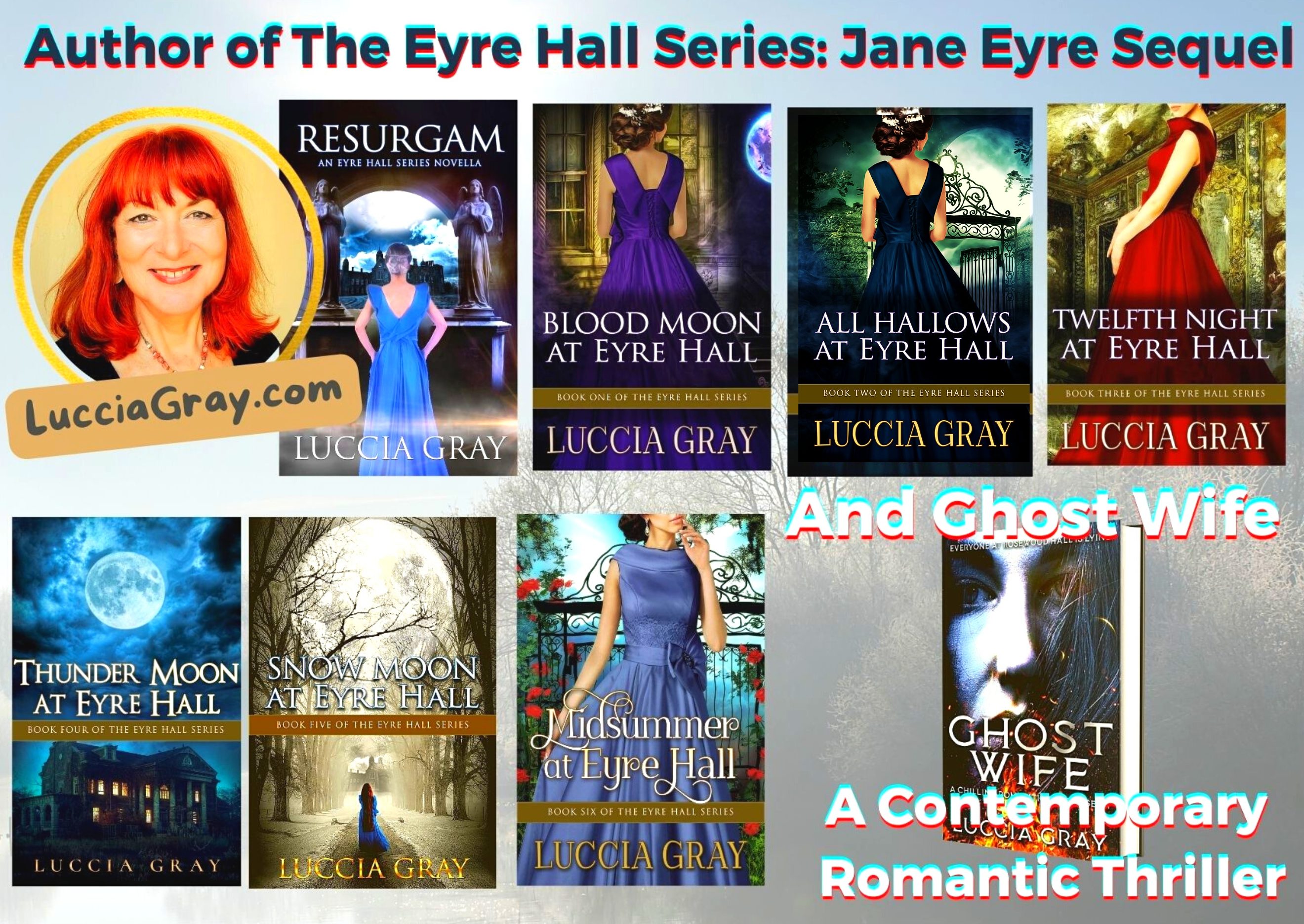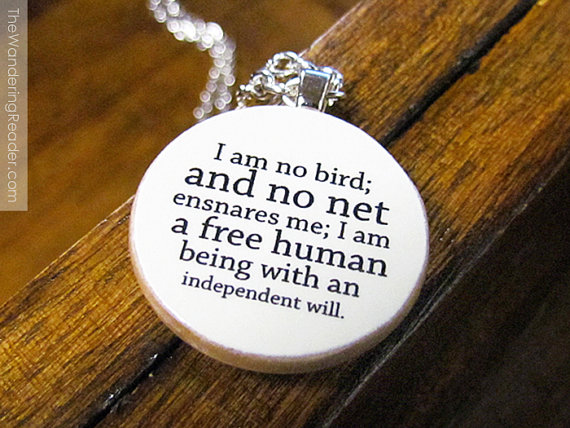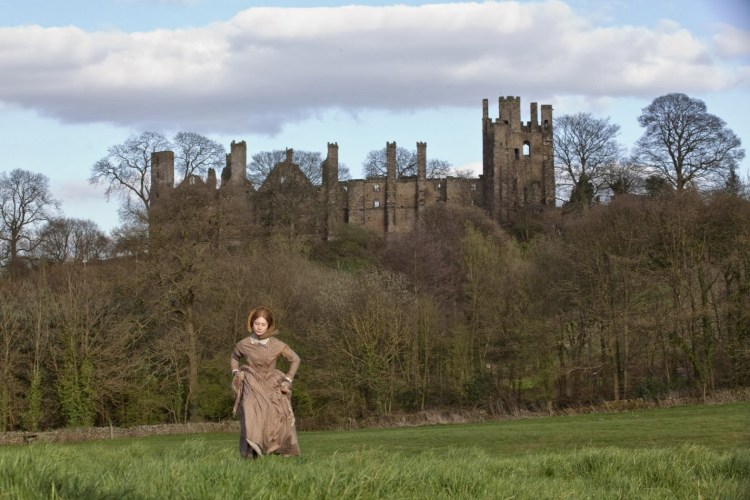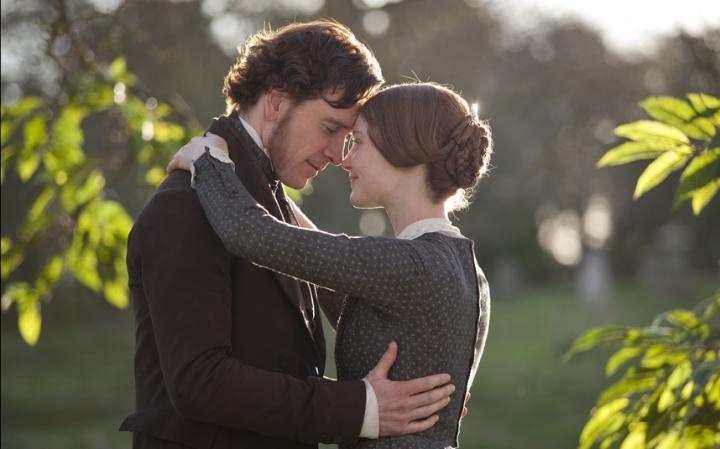The autumn months of September, October and November witness major events in both Jane Eyre and Edward Rochester’s lives.
Jane Eyre starts narrating her autobiography in autumn, specifically in November, ‘a drear November day’ she calls it. The novel has an oppressive and gloomy beginning in which she tells the reader about her loveless and lonely childhood at Gateshead, with her heartless Aunt Reed and bullying cousins, Georgina and John.
Jane is trapped in a freezing outdoor climate with an equally frosty atmosphere inside the house, as she states in her very first paragraph.
‘There was no possibility of taking a walk that day. We had been wandering, indeed, in the leafless shrubbery an hour in the morning; but since dinner (Mrs. Reed, when there was no company, dined early) the cold winter wind had brought with it clouds so sombre, and a rain so penetrating, that further out-door exercise was now out of the question.’
And there we have one of the major themes in the novel, freedom, or in this case lack of freedom represented by the confinement she is subject to outside, due to the weather, and inside as she is denied access to family reunions and even locked in a room.
However, Jane’s experience of Autumn is not always so miserable.
Eight years later, after graduating at Lowood and taking on a teaching position there, she decides she wants to widen her horizons, so she advertises for a job as a governess.
‘…towards the close of a pleasant autumn day, I found myself afoot on the road to Lowton. A picturesque track it was, by the way; lying along the side of the beck and through the sweetest curves of the dale: but that day I thought more of the letters, that might or might not be awaiting me at the little burgh whither I was bound, than of the charms of lea and water.
My ostensible errand on this occasion was to get measured for a pair of shoes; so I discharged that business first, and when it was done, I stepped across the clean and quiet little street from the shoemaker’s to the post-office: it was kept by an old dame, who wore horn spectacles on her nose, and black mittens on her hands.
‘Are there any letters for J.E.?’ I asked.
And this is when she receives Mrs. Fairfax’s reply, offering her a job at Thornfield. Jane travels to Thornfield Hall that same autumn, specifically in October and she finds everything there pleasing.
She arrives in the evening, but she describes her first morning there as a ‘a fine autumn morning; the early sun shone serenely on embrowned groves and still green fields; advancing on to the lawn, I looked up and surveyed the front of the mansion. It was three storeys high, of proportions not vast, though considerable: a gentleman’s manor-house, not a nobleman’s seat: battlements round the top gave it a picturesque look. Its grey front stood out well from the background of a rookery, whose cawing tenants were now on the wing: they flew over the lawn and grounds to alight in a great meadow, from which these were separated by a sunk fence, and where an array of mighty old thorn trees, strong, knotty, and broad as oaks, at once explained the etymology of the mansion’s designation.’
Jane is finally feeling calm and happy which contrasts to the opening chapter which starts with a dreary autumn.
The reader and Jane can presume that her luck is changing and that a better life full of new opportunities lies ahead. She has her duties, which enable her to earn a salary, but she is not trapped at Thornfield. She is her own boss. No one bullies her. She’s starting to live her life as a free person, which is what Jane desires.
One of her most famous phrases in the novel is:
“I am no bird; and no net ensnares me: I am a free human being with an independent will.”
Jane is a prisoner at the beginning of the novel, and she’s started her road to freedom once she arrives at Thornfield Hall.
The following November, Jane learns that she has inherited a fortune from her uncle John Eyre, a wine merchant who lived in Madeira, when St John gives her the solicitor’s letter and she confesses her real identity. It’s also when she learns St John and his sisters Mary and Diana are Jane’s cousins.
Another crucial event to the plot, which took place in autumn was the fire which burnt down Thornwood Hall. It occurred during the harvest, so probably between late September and early October.
It was a ‘dreadful calamity’ as Jane is told when she returns to find Rochester, but really, it meant that Rochester had become a widower and consequently a free man. It was a perfect end to her rival, the first Mrs Rochester, and although Mr Rochester was injured, he survived and was able to remarry.
Curiously Mr Rochester had married Bertha Antoinette Mason in Autumn, too.
‘I affirm and can prove that on the 20th of October A.D.—(a date of fifteen years back), Edward Fairfax Rochester, of Thornfield Hall, in the county of—, and of Ferndean Manor, in—shire, England, was married to my sister, Bertha Antoinetta Mason, daughter of Jonas Mason, merchant, and of Antoinetta his wife, a Creole, at—church, Spanish Town, Jamaica. The record of the marriage will be found in the register of that church—a copy of it is now in my possession. Signed, Richard Mason.’’
So for Rochester his ill fated and according to his account, mistaken marriage, began and ended in autumn, specifically in October.
The novel ends in summer, but it is because of the events which occurred the previous autumn that they are both free at last.
Jane has refused St John’s offer of marriage and she has inherited a fortune, while Rochester has lost his main property but he is still a wealthy man and overall, he is free from his ‘mad’ wife.
‘I sat at the feet of a man, caring as I. The veil fell from his hardness and despotism. Having felt in him the presence of these qualities, I felt his imperfection and took courage. I was with an equal—one with whom I might argue—one whom, if I saw good, I might resist.’
They are both financially, emotionally and legally free, so they are able to marry for love and live as equals.
Jane believes she has her happy ending and urges her readers to believe it too, but as Orson Wells once said, “If you want a happy ending, that depends, of course, on where you stop your story.”
I couldn’t let it go.
Jane Eyre leaves too many spaces between the lines. There are countless unanswered questions about Bertha, the first Mrs Rochester’s life and death, her brother, Richard’s role in his sister’s marriage and confinement, and Mr Rochester’s abundant lies and manipulation. On the other hand, what about Jane’s intelligence and fiercely independent nature, would she be content to spend the rest of her life exclusively devoted to an ailing and irritable husband in a remote, manor house?
There was so much that I wanted to explore, and that’s what led me to write The Eyre Hall Trilogy, but I warn you, it is not for any unconditional fans of Mr. Rochester.







